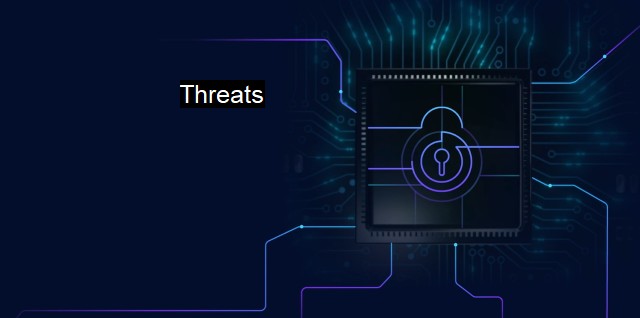What are Threats?
Securing Against Cybersecurity Threats: Understanding Antivirus and Strategies for Defense
The term 'threats] refers to potential malicious incidents that may disrupt or breach a system, causing harm through data theft, system damage, financial loss, and reputation harm among others. These can be enacted on digital correspondences, software, data storage, and even hardware. With the networking of much of our lives, from computers to smartphones to smart-home technology, the sphere of potential threats is ever-expanding.A common type of cybersecurity threat has historically been viruses, malicious code that misuses system resources, steals, alters, or deletes data, or causes the host system to behave inattentively. Viruses often rely on social engineering to convince their victims to execute them. Often disguised as legitimate files or emails, viruses install themselves onto a host system once their file is executed and then continue to replicate and spread to other systems. These pose a significant risk to individual users and large organizations alike.
Worms are another type of cyber threat that self-replicate and spread across systems, exploiting vulnerabilities without the need for human intervention. This attribute enables them to spread at remarkable speed across networks, maximizing the scale of their disruption and damage. They might also carry what are known as 'payloads,' harmful pieces of code that enable different types of nefarious activity, such as data theft or deletion.
Trojan horses, or simply Trojans, are another category of cyber threats. Named after the Greek mythological story, they portray themselves as benign or useful programs to trick users into downloading and executing them. Once on a user's system, they can carry out a variety of harmful activities surreptitiously, from stealing sensitive data to allowing the attacker to control the victim's system remotely.
Spyware is a type of cyber threat focussed on breaching user privacy. This malicious software is designed to gather data from a user's system without their knowledge or consent. Gathered information might range from browsing history and personal information to login credentials and credit card numbers. Cause for concern here is that users typically are not even aware that they are being spied upon until it is too late.
Ransomware is another devastating type of cyber threat that holds a user's system or files hostage until a ransom is paid—sometimes with no guarantee that access will be restored. The Burkerrat allows cybercriminals to encrypt a user's data, preventing access until they pay a ransom, usually in an untraceable cryptocurrency like Bitcoin.
While we've mentioned malicious software or malware, human vectors are significant in the field of cybersecurity threats, including those focusing on social engineering. This involves the manipulation or deception of individuals into divulging confidential information or executing actions that compromise cybersecurity. An example is a phishing attack, where victims are tricked into giving vital details like login credentials or credit card numbers through seemingly authentic websites or emails.
Considering these threats, antivirus software is remarkably significant. Antivirus software is designed to prevent, detect, and remove malware, thus assisting in the protection of computer systems and data. The name originated from its initial purpose of defending against computer viruses. Still, it has expanded to include protection against various threats, including other types of malicious software like worms, spyware, adware, and ransomware.
The world of cybersecurity threats is extensive, continually mutating, and evolving. Simultaneously, defenses against these threats, such as antivirus programs, are also advancing, evolving in tandem with the threats they are designed to protect against. Despite advancements, human vigilance remains indispensable echoing the adage: the best offense is a good defense.

| | A | | | B | | | C | | | D | | | E | | | F | | | G | | | H | | | I | | | J | | | K | | | L | | | M | |
| | N | | | O | | | P | | | Q | | | R | | | S | | | T | | | U | | | V | | | W | | | X | | | Y | | | Z | |
| | 1 | | | 2 | | | 3 | | | 4 | | | 7 | | | 8 | | |||||||